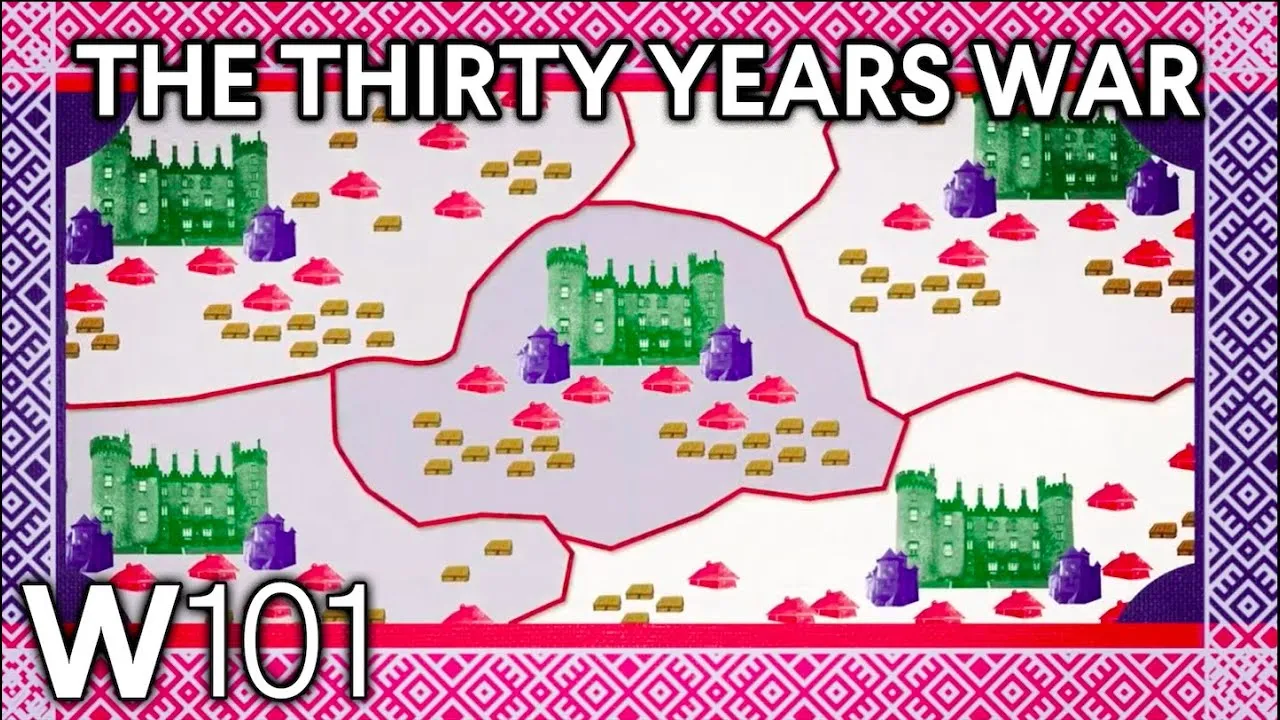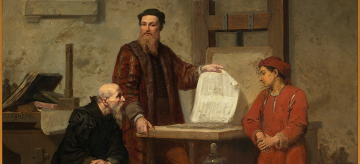Why Do We Live in Countries?
How did sovereignty become part of world history? In this educational video, learn why kingdoms turn into countries after the Thirty Years’ War.
What are countries?
The world is home to nearly two hundred countries, and no two are exactly alike. Russia, for instance, spans eleven time zones, while Vatican City could fit comfortably within Central Park.
Large or small, however, all countries have something in common: they are the basic building blocks of the international political system. Essentially, that means that each country has a government that is responsible for what goes on within its clearly defined borders.
What is sovereignty?
But this hasn’t always been the case. Not only have borders shifted over the years, but the very concept of a country is relatively new. This video explores the origins of our modern international system, which comprises sovereign countries, and how it emerged from a competing patchwork of kingdoms, empires, fiefdoms, and city-states following a particularly devastating conflict known as the Thirty Years' War.
Video Transcript: How the Thirty Years’ War Led to Modern Countries
Around the world, people live in countries and follow those countries’ rules, from what they can do, to what they can’t do, and everything in between. But a country’s rules generally apply only to the people who are within its borders, not to people in other countries. And those rules are generally set by the country’s government, without interference from other countries.
Kingdoms and Empires
These ideas—that countries should be able to choose the rules that govern their society and that they form the main building blocks of the international system—stand at the heart of the modern international order. But organizing ourselves into countries is relatively new. This orderly way of divvying up the world was born from a chaotic period of European history centuries ago, when political authority was based on a system called “feudalism.”
In that system, people pledged their loyalty to others who had more resources or military strength. The first type of person was referred to as a vassal. They would provide some type of support to the other person, referred to as a lord. And in return, the lord would offer the vassal military protection, land, or money.
On a large scale, these relationships created hierarchies, with laborers pledging themselves to landowners, who pledged themselves to even more powerful landowners with titles like duke and baron, who pledged themselves to even more powerful kings and queens, forming kingdoms and empires.
But these arrangements were often messy. Hierarchies overlapped, and vassals often had multiple lords, creating competing allegiances. Plus, feudal arrangements could be inherited through family and marriage, helping to create an interwoven network of lords, whose authority overlapped across a mess of territories. In this tangle, lords would often fight to determine whose authority should actually be followed, leading to regular conflict and frequently shifting borders.
The Thirty Years’ War
Making things even more complicated were leaders who held universal claims of authority. From Rome, the Catholic Church’s leader, the pope, claimed political authority over all Christians, regardless of where they lived. And the Church routinely involved itself in political and economic affairs across Europe, often creating tensions with secular leaders.
In Central Europe, the Holy Roman Empire made similar claims of authority over all Christians, with at least one emperor declaring himself dominus mundi, or “lord of the world.” This patchwork of competing claims of authority continued for centuries and ultimately set the stage for the Thirty Years’ War, one of history’s deadliest conflicts.
Before the war, many Christians across Europe had split from the Catholic Church and became Protestants, leading to many conflicts. And like much of Europe, the Holy Roman Empire was divided. It was composed of hundreds of estates led by various lords, many referred to as “princes.” Some princes governed their lands as Protestant and some as Catholic.
In 1618, a Protestant region, fearing religious persecution, rebelled against the Catholic emperor. But for a variety of religious and political reasons, the conflict expanded. Leaders from across the continent sent their armies into the empire to fight, resulting in brutal widespread violence, destroying entire cities, and killing millions of people.
Scholars point to the end of this war in 1648 as a turning point for Europe, where out of chaos, the modern international system was born. Instead of nebulous kingdoms interwoven with each other, countries start to emerge, interacting with each other based on the understanding that their authority is limited to the territory they actually control.
The Peace of Westphalia
Many experts say that the Peace of Westphalia, the treaties that ended the war, established the important principle of sovereignty, which has essentially three dimensions: that countries should accept the borders of other countries and not use force to change them, that countries should not interfere in other countries’ domestic affairs, and that governments should have complete authority within their own borders.
So, under this principle, over time the tangle of feudal arrangements became less important, and claims to universal authority were ignored. While Europeans pioneered this idea, they regularly violated each others’ sovereignty after the war. And by continuing to expand their empires, they denied it to their colonies around the world.
But empires proved hard to maintain, particularly when imperial subjects had different political rights and when groups within them had different languages, cultures, and ideas. These groups, often referred to as “nations,” frequently rejected the political authority of the empires.
Gradually, as European empires broke apart, new leaders would normally claim authority over only the territory they controlled within
specific borders—and in general, respect the same claim of other leaders.
Sometimes, those borders didn’t match the ethnic groupings of the people there, which could cause conflict. But where they did match, people were often more loyal to their new governments, enhancing their leaders’ authority and ability to govern effectively.
A New International System
With more of the world’s land divided up into countries, and more of those countries adhering to the principle of sovereignty, the international system became less chaotic. Of course, deadly conflicts would continue to erupt. But when the physical conditions for peace were present, sovereignty created a political and legal basis for more durable periods of order and, over time, the foundation of the international system we know today.



